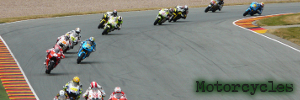















6 Tips to Avoid and Minimize Motorcycle Accidents |
|---|

|
Gina Williams/MotorcycleAccident.org
March 19, 2012
1. Take a motorcycle safety course.
A safety course can benefit even the most skilled motorcyclist. According to the U.S. Department of Transportation’s National Highway Traffic Safety Administration (NHTSA), motorcyclists are 25 times more likely to die on the road than those in passenger cars. Given this, motorcyclists should know how to safely ride and how to react in an accident situation. The Motorcyclist Safety Foundation offers 2 courses (one for new motorcyclists and one for experienced motorcyclists) in close to 1,500 locations throughout the United States.
2. Constantly observe your surroundings.
Unfortunately, motorcycles are simply harder to see than passenger cars; however, this is only one of the problems. The simple fact is that you cannot control the environment or drivers around you; you can only control you. Therefore, you should consistently scan your surroundings for possible dangers. The sooner you spot a threat, the sooner you will be able to prepare for and react to it.
Tips:
* Rid yourself of distractions; e.g. cell phones, mp3 players, etc.
* Do not stare straight ahead of you; constantly check your mirrors.
* Keep a good distance between you and other motorists.
3. Hand positions matter.
Intersections are where the most accidents happen. To be fully prepared for a stop, place your hands over both your front and rear brakes when you are approaching a stop; this will allow you to brake as quickly as possible if necessary.
Always be at the ready to brake, though not necessarily with your hands over the brakes, which could result in accidental braking. If an obstacle suddenly appears, you need to be able to slow down quickly so that you can go around it instead of over it.
4. Your position on the road matters
Position yourself closer to the side of the road you are on. If you are in the right lane, position yourself closer to the right shoulder; if you are in the left lane, position yourself closer to the left shoulder. This will allow you more room to avoid an accident or debris in the roadway without potentially hitting another motorist.
When you go around curves, place yourself on the opposite side of the way the curve veers. For instance, if you come to a curve that bears right, you should be on the left side of your lane, and vice-versa. If you must brake before straightening up in a curve, then do so slowly while straightening up.
5. Practice braking.
In the past, the best way to avoid getting injured in an accident was to turn the motorcycle on its side, which usually ended in injury itself. However, technological advances in tires and brakes now mean that the best way to avoid a collision or fall is to straighten your bike’s steering, and brake. Many riders never practice their braking techniques; thus, when they are faced with an accident, there is no skill in their reactions and they may even react in a way that guarantees they will be injured more so than necessary. It is imperative that you practice your braking techniques for several different scenarios so that you will react properly in the event of an accident.
6. Wear the proper gear.
According to the NHTSA, wearing a helmet can reduce your risk of head related injuries by 69 percent and your risk of death due to head injury by 42 percent. Your helmet should be a full-coverage helmet with a visor; this means it should cover your chin, eyes, and nose. Put simply, your face and head should be completely covered by protective materials. Additionally, you should wear protective boots with gripping soles, gloves, and either protective pants and a jacket or a protective full bodysuit.
